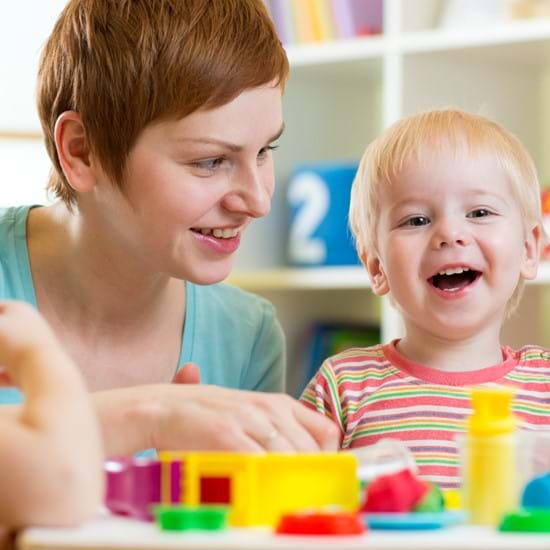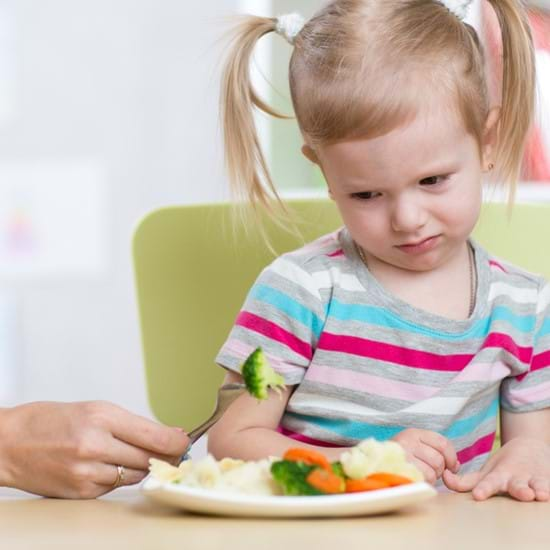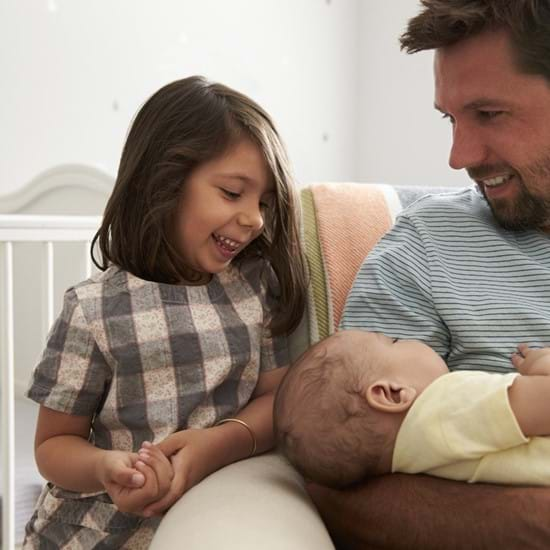
Tackling the Playroom Chaos - Step 1: Declutter

Written by: Joëlle Cloutier
I doubt I’m the only parent who’s ever stood in front of a chaotic playroom completely overwhelmed and wondering: “Where did all these toys come from? Were there really that many when I went to bed yesterday… did they multiply overnight?” Today, I want to pass on five tips to create a clutter-free playroom and get the kids involved.
Set the Example and Verbalize the Process
Children learn a lot by mimicking their parents. Seize this opportunity to verbalize what you are doing when organizing the house and decluttering: “Mommy really liked this book, but she decided to let it go so that other people can read and enjoy it too. Mommy is freeing up space to discover new books.”
I adopted this practice with my daughter, who now manages to explain to me when a game has lost its appeal or when one of her books no longer interests her. I’m still a bit surprised when I hear her say something like: “Mom, we could give this game to another child, I think I’m too big to play with it and maybe a friend would appreciate it.”
Respect Your Child’s Pace and Be Supportive
It’s not always easy for adults to let go of their belongings, so imagine how challenging this process can be for a child. It’s important you listen to what your kids have to say and respect the pace at which they accept to part with their playthings. I wouldn’t necessarily recommend asking children under the age of five to choose the toys themselves, but if it comes naturally to your little one, I invite you to guide them in this decision.
After seeing me unclutter my bedroom, my six-year-old daughter decided on her own to “clean up” her toys. I first offered my help, explaining that she would be the one making the decisions; that I would only be there to help her tidy up afterwards. She went through her bookshelves, handing me the items she wanted to keep and the ones she didn’t like anymore. I sometimes double-checked with her when I had doubts. I would simply ask: “I’ve seen you play with this puzzle often; you don’t enjoy it anymore?” without insisting further that she keep it.
Establish Boundaries and Get Involved
I have to admit that when my daughter decided to “clean up”, the process was sometimes harder on me than her. I realized I was the one attached to certain toys or books that she didn’t particularly like. I respected her decisions and, on one occasion, asked her if she would allow me to keep a storybook that I really liked. This book is now in my library, not hers, as she was ready to dispose of it ... but I wasn’t.
If you feel your child isn’t ready to make his or her own choices, I suggest you set clear limits from the start, explaining what you don’t want to see cleared out. You can also participate in the selection process if you feel more comfortable with this option. For instance, if your child has a dozen teddy bears, you can suggest that each of you take turns choosing one to keep. Before you begin, let your child know the maximum number of teddies that can stay.
Keep in mind that it’s your child, not you, who will have fun with these toys.
Make it a Game and Encourage Your Kids
Does your child like to play pirates? Why not turn the playroom into a treasure island; where your little pirate has to choose his or her 15 favourite toys as booty.
Take out two boxes, one for treasure and one for the toys left behind on the island—there simply isn’t enough room for all of them on the ship! This will allow you to quickly identify which toys are keepers. With each item added to the box of toys to leave on the island, reinforce your child’s decision: “You’re right, good choice! Nice job, you’ve got a good eye for real treasure!” Still, explain from the start that the goal is to let go of certain toys (or specify a number) so that other pirates can also have some loot.
Be Understanding
Although you may have the best intentions in the world and approach the task of cleaning up the playroom gently, your child just might not be ready yet… and it’s more than ok!
Making toys disappear or forcing kids to dispose of them can have the opposite effect, causing them to hang on to their belongings in the future. It may take a little patience and some good tricks to organize everything while waiting to declutter a little more. Praise your kids even if they let go of just one toy. If they aren’t ready, reassure them by explaining they can have more time to think it over. It’s best to set a good example, because you yourself wouldn’t like being forced to let get rid something you care about!
Finally, remember that being organized is not instinctive! Continue to reinforce positive behaviours so your child builds enough confidence to progress in this new learning.
If you need advice on how to overcome the playroom chaos, stay posted for our next article on simple tricks to optimize this room’s organization.
Joëlle Cloutier
@joelleorganisation
facebook.com/joelleorganisation
www.joelleorganisation.com

Tackling the Playroom Chaos
Step 1: Declutter


